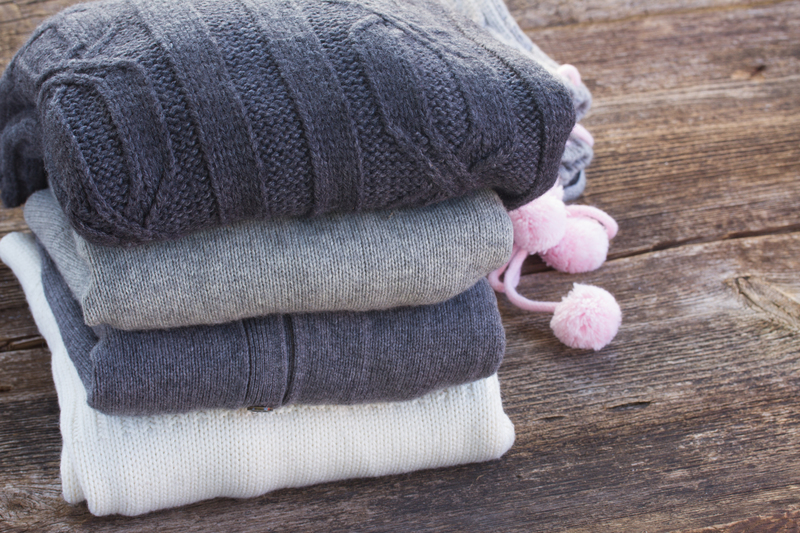Effective Recycling at Home: Tips You Need to Know
Recycling at home is one of the most impactful ways individuals can help reduce waste, conserve resources, and protect the environment. With growing awareness about environmental problems, effective household recycling has never been more crucial. This comprehensive guide explores strategies for successful recycling at home, offers actionable tips, and answers frequently asked questions.
Why Home Recycling Matters
Before diving into the best practices for recycling at home, it's essential to understand the significance of these actions. When practiced effectively, residential recycling can:
- Reduce landfill waste and its harmful environmental effects
- Conserve energy by minimizing the need for raw material extraction
- Preserve natural resources for future generations
- Lower your carbon footprint and fight climate change
- Support local recycling and manufacturing industries
Implementing an effective household recycling system is a simple yet powerful way to make a positive contribution to the planet, right from your own kitchen or garage.

Understanding What Can and Cannot Be Recycled
One of the most important recycling tips for households is knowing what items are accepted by your local recycling program. Recycling guidelines vary between cities and communities, so always check local resources first. However, there are some general rules:
Commonly Recycled Materials
- Paper: Newspapers, cardboard, office paper, magazines (avoid food-soiled paper).
- Plastics: Bottles, containers, jugs labeled #1 (PET) or #2 (HDPE). Check for the recycling symbol.
- Glass: Clear and colored bottles and jars. Rinse out residues.
- Metals: Aluminum cans, tin cans, and foil (clean and dry).
Items Not Suitable for Curbside Recycling
- Plastic bags and film (unless specified by your program)
- Styrofoam (polystyrene)
- Soiled paper plates and napkins
- Pizza boxes (greasy parts)
- Electronics, batteries, light bulbs
- Ceramics and glass cookware
Tip: Some of these items can be taken to specialized recycling drop-off locations--research local services!
Setting Up an Efficient Home Recycling Station
Creating a dedicated space for recyclable materials is key to making the process convenient for every household member. Here's how to optimize your setup:
- Choose the right containers: Use separate bins for paper, plastics, metals, and glass. Color-coded or clearly marked containers reduce confusion.
- Keep it accessible: Place bins in the kitchen, garage, or other high-traffic areas to make recycling a part of daily routines.
- Educate your family: Post a simple chart or list showing what can and cannot go in each bin.
- Prepare recyclables correctly: Rinse containers to prevent odors and pests, and flatten cardboard to save space.
Organizing your home recycling station increases participation and ensures everything that can be recycled actually gets processed.
Top Tips for Successful Home Recycling
- Keep it clean: Contamination is a major issue. Rinse containers and remove food residue before recycling.
- Don't bag recyclables: Most curbside programs don't accept recyclables in plastic bags. Empty them loose into your provided bin.
- Avoid "wish-cycling": If you're unsure whether an item is recyclable, check first. Placing unaccepted items can contaminate whole batches.
- Remove caps and labels: Some programs ask you to remove bottle caps and labels--for those that do, comply for better processing.
- Stay up to date: Recycling rules can change. Sign up for local waste management alerts, or regularly check their website.
Extra Tips for Recycling Glass, Metal, and Plastic
- Glass: Avoid mixing plate glass, mirrors, or window glass with bottles and jars.
- Metal: Rinse cans and crush them to save space. Don't recycle aerosol cans unless explicitly accepted.
- Plastic: Stick to bottle-shaped items unless your program allows other shapes. Avoid black plastics, as they're often not recyclable.
Creative Ways to Reduce, Reuse, and Recycle at Home
Beyond simply sorting waste, there are innovative strategies for improving recycling practices at home and reducing overall consumption:
- Buy in bulk: Reduces packaging waste over time.
- Opt for reusable over disposable: Use cloth bags, water bottles, and storage containers.
- Repurpose containers: Glass jars make great storage for pantry staples or leftover food.
- Compost organic waste: Divert food scraps and yard trimmings from the landfill by starting a compost bin in your backyard or kitchen.
- Host a swap party: Exchange gently used items with friends to keep products circulating and out of landfills.
Composting: The Forgotten Recycling Tool
Composting is a form of recycling that transforms kitchen scraps and yard waste into nutrient-rich soil for gardening. It's an easy way to divert up to 30% of household waste from landfills. Items you can compost include:
- Fruit and vegetable peels
- Coffee grounds and tea bags
- Eggshells
- Grass clippings and leaves
- Paper napkins and unbleached paper towels
Avoid composting: dairy, meat, oils, or processed foods, as these attract pests and create odors.
How to Deal with Hazardous Household Waste
Effective recycling means disposing of hazardous materials properly. Items like batteries, electronics, paint, and some cleaning products should never go in your curbside recycling or trash bin. Instead:
- Participate in community hazardous waste collection days.
- Take electronics to e-waste recycling centers.
- Return used batteries to retail collection points.
Proper disposal prevents harmful chemicals from polluting the environment and protects sanitation workers from injuries.
Electronic Waste (E-Waste) Recycling at Home
Old phones, laptops, and gadgets contain valuable resources and dangerous chemicals. Look for certified e-waste recyclers or local collection days. Many electronics retailers offer free drop-off programs.
How to Encourage Your Family to Recycle at Home
Getting everyone in your household on board ensures better results and less confusion. Try these family-friendly recycling strategies:
- Lead by example: Demonstrate proper recycling habits for kids and visitors.
- Make it easy and fun: Colorful bins, charts, and even small rewards for children can boost participation.
- Discuss environmental benefits: Share facts, host family movie nights with documentaries, and talk about why recycling matters.
- Assign roles: Let children or roommates be "recycling monitors" in charge of emptying bins or checking proper sorting.
Common Mistakes to Avoid in Home Recycling
- Bagging recyclables: Most recycling facilities cannot process bagged items--it slows sorting lines and bags may end up as trash.
- Not checking local guidelines: Rules change often. One city may accept all plastics, while another only takes #1 and #2 plastics.
- Recycling dirty items: Food residue contaminates loads and could result in entire batches being trashed.
- Wish-cycling: Placing "maybe" items like pizza boxes, plastic utensils, or fast food containers in bins--these often aren't recyclable.
Making Recycling a Habit: Long Term Success Tips
Effective recycling at home isn't a single action--it's a lifestyle choice. To maintain momentum over the months and years:
- Keep learning: Attend local workshops or webinars about recycling and composting.
- Stay organized: Review your setup every few months and adjust as needed--add more bins or update your sorting chart.
- Shop smarter: Buy items with recyclable or minimal packaging, and support brands with green initiatives.
- Engage with your community: Join or start a neighborhood recycling group, or volunteer for cleanups.
Apps and Technology for Better Recycling
Download recycling apps like iRecycle, Recycle Coach, or your local waste management app to get real-time updates, sorting tips, and recycling day reminders.

Frequently Asked Questions About Home Recycling
1. Can pizza boxes be recycled?
It depends. If the box is free of grease and food residue, the cardboard can usually be recycled. Otherwise, tear off clean parts and compost or trash the rest.
2. What numbers of plastic can be recycled?
Most communities accept #1 (PET) and #2 (HDPE) plastics. Check locally for #3-#7; many aren't processed curbside.
3. Should I rinse containers before recycling them?
Yes! Empty and rinse containers to prevent contamination and pests.
4. How do I dispose of batteries or electronics?
Take them to dedicated e-waste collection sites or retail store drop-boxes.
5. What happens if I make a recycling mistake?
A single error may result in contamination of the batch, so always check guidelines. If in doubt, leave it out.
The Big Picture: Recycling for a Sustainable Future
Mastering effective recycling at home is a powerful first step toward protecting our planet. Each clean can, sorted paper, and rinsed bottle adds up--reducing landfill waste, conserving resources, and building a more sustainable community.
Remember:
- Stay informed about your local recycling policies
- Make recycling easy and accessible for everyone in your household
- Reduce and reuse before you recycle where possible
- Spread the word to encourage others to join this crucial mission!
By following these practical home recycling tips, you'll not only help create a healthier environment for future generations but also become a role model for your neighbors, friends, and family. Start today--the planet will thank you!